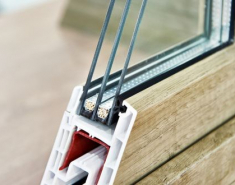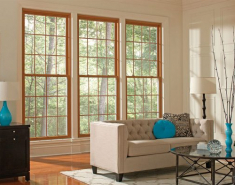A sound alternative to window replacement
Hotels and motels located near noisy streets, highways, train tracks, airports or urban city walks face the challenge of keeping external noise from penetrating into what should be the quiet, peaceful sanctuary of the guest room.
Hospitality-specific soundproofing solutions address the primary culprits of noise ingress — windows and patio doors — to cut external noise, without replacement or major renovation.
Already used in thousands of rooms across North America, these solutions in many ways remain lesser known. However, other options, which can range from replacing double pane windows to inserting sheets of Plexiglas, have a limited ability to reduce exterior noise.
As a result, many owners and managers are turning to the soundproofing industry for solutions engineered for maximum noise reduction.
Replacement windows
Studies have shown that 90 per cent of exterior noise enters through windows, not walls. However, replacing windows seldom adequately resolves the problem.
Double or triple-pane windows, for example, filter out only slightly more noise than a single pane, if any. Although effective at insulating from external heat or cold, these products are not engineered for soundproofing.
With double-pane windows, the two pieces of glass within the frame vibrate like the two tynes of a tuning fork, which actually creates more noise. Also, the air space for both double and triple-pane windows does little to retard the sound vibrations.
Much of the noise that enters through windows comes through leaking window seals. With age conventional window seals fail, so any partial relief experienced by replacing windows may be short-lived.
Soundproofing technology
Some hotels are turning to soundproofing companies that have experience engineering products used in the most noise-sensitive environments in the world, such as recording studios.
One solution, a “second window,” is designed to be installed in front of existing windows, matching and functioning like the original window, no matter its design or whether it opens or closes.
This inner window essentially reduces noise from entering on three fronts: the type of materials used to make the pane, the ideal air space between original window and insert, and improved, long-lasting seals.
The first noise barrier, laminated glass, dampens sound vibration much like a finger on a wine glass stops it from ringing when struck. An inner PVB layer of plastic further dampens sound vibrations.
Air space of two to four inches between the existing window and the soundproof window also significantly improves noise reduction because it isolates the window frame from external sound vibrations.
Spring-loaded seals in the second window frame put a constant squeeze on the glass panels, which prevents sound leaks and helps to stop noise from vibrating through the glass.
When choosing such soundproofed windows for a hotel project, the most objective measure of sound reduction is the window’s Sound Transmission Class (STC) rating. In this rating system, the higher the number the more noise is stopped.
A typical STC rating for standard windows is 26 to 28, for example. Acoustic soundproof windows, by comparison, have a typical STC rating of 48 to 54.
Since external noise can also enter sliding glass doors, which are common on ground-floor hotel rooms or upper-level rooms with patios, similar soundproofing strategies can also be used effectively in these applications.
Like the soundproof windows, a second sliding glass door can be added, but mounted either inside or outside an existing sliding glass door to reduce external noise entering through the patio door.
Energy savings
Soundproofing hotel windows and sliding glass doors can also reduce the heating-cooling portion of energy bills by adding another layer of insulation.
Whether hotel owners and managers seek to protect their customers from stressful external noise intrusion, offer more peace and quiet, or reduce heating-cooling related energy costs, soundproofing existing windows is a viable alternative to replacing them.
Source: https://bit.ly/2G2CIVu









